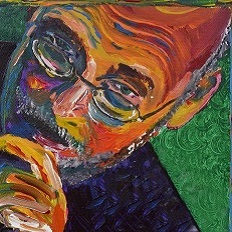The Intergalactic Hospital for Malfunctioning Mechanicals
Since the hospital's inception, no mechanical beings have passed the rigorous entrance examination to practice there.
We should all be so lucky as to go on staff at the world-famous Intergalactic Hospital for Malfunctioning Mechanicals (IHMM). Selection for a position at the IHMM is as difficult as you might expect. Openings occur only once every few decades. Founded by an illustrious automaton nearly a millennia ago, the facility is staffed by enhanced life forms with the cognitive constructs, peripheral brains, or interstellar-cloud-based memory banks to store the schematics and functionality of the vast number of robots that exist in the known universe.
That's not all, though. Having a working knowledge of the circuitry, schematics, and normal functionality of a robot is a far cry from understanding how to fix a malfunctioning one. As the functionality span (funcspan) of mechanicals increased over the centuries, the need for complex hospital-based repair services increased. The spectrum of stresses—gravitational, chemical, radioactive, and positronic—that could cause major damage is extreme, and diagnosing a problem, identifying the causality, and then treating and restoring full function as well as preventing recurrence is a nonprogrammable art form. Since the hospital's inception, no mechanical beings have passed the rigorous entrance examination to practice there.

That is, until MDROB883-DoK25 came along. DoK was designed to be a basic medic robot for an underserved quadrant, treating carbon- and silicon-based life forms as well as mechanicals. But some variation in the production of its positronic brain gave it an unusual innate ability for healing. Its diagnostic and therapeutic functionality was bolstered by empathy and curiosity chip upgrades. Grateful patients sent their friends, relatives, and employees to the healing robot. It was only a matter of decades until DoK was recognized for its value and sent for advanced training. DoK graduated top of the class at the Ganymedean Academy for Artificial Life. DoK just had to apply for a staff position at the IHMM, no matter the odds.
For a staff position at the main campus, reference letters from top academicians, stellar grades, and decades of experience were just the opening salvo. Those applicants deemed worthy went to a board for review; only six applicants out of 3,000 were selected for this step. DoK was the first robotic candidate to make it this far in three centuries.
The next step was a practical. Each of the selected candidates was given a chance to diagnose and create a treatment plan for a complexly malfunctioning mechanical. By hallowed tradition, the finalists got to attempt this feat in random order, and whoever made the correct diagnosis and treatment would get the single available staff position. The names were drawn, and somehow, to no observer's real surprise, DoK was last in line.
The patient was an antique automaton, hunched over shabby mobility treads, not responding to anything but high-amperage noxious stimuli. Its outer covering was pitted with minor dents and scabs of rust. The visual and auditory sensors were barely registering, and whatever lubricant flowed through its tubing was thick with debris. Despite this, a faint glow and buzz of electric activity emanated from the aged mechanical husk.
The first candidate was a neural-linked cephalopod with a specialization in servomotors. Using its sensory-enhanced suckers, it suggested that a servomotor flush and line replacement would fix the problems. This led to an improved balance and less of a hunched form, but no cure. Dr. Ceph then suggested that the robot's funcspan was up. Candidate declined.
The second was a crystalline. Despite its prodigious memory, it could discern no obvious pattern to the problem. The suggestion of a complete valve replacement was ignored, and it too concluded that perhaps this unit was beyond its funcspan and should be recycled.
The third candidate was a fungal consortium with a special interest in pump failure. The mechanical patient certainly had a failing pump, and the lubricant lines were clogged to 75%. But still no cure. Two more candidates followed, a terrapod with a communal linkage who suggested swivel joint replacement, and a mutated stellarbean who suggested it was the filtration system. All failed.
Finally, it was DoK's turn. To DoK, the patient was not an ancient pile of gears waiting for the junk pile, but a marvelous mechanical that had survived centuries. What was really wrong with it, other than an amalgam of ailments, from pump to joint, sensory to leaking servo? DoK's time was running out, but it was sure that the robot was not at its funcspan. It had viewed the ancient recordings of the founding of this facility and had a sense that there was more to this patient than met the ocular array.
Leaning forward, DoK took a metal syringe from its own treatment kit, filled it with a small vial of positronic cells, and advanced to inject the radiation-enhanced neural elixir.
As it did, the robotic patient began to activate, its arrays bright. Its surface seemed less ancient. In a gravelly vocal, it thanked DoK, saying that the diagnosis was correct. The positronic fluid was low and the system was depressed in functionality.
The patient identified itself as the robotic founder of the hospital, welcoming DoK as the newest member of the staff of the Intergalactic Hospital of Malfunctioning Mechanicals.



